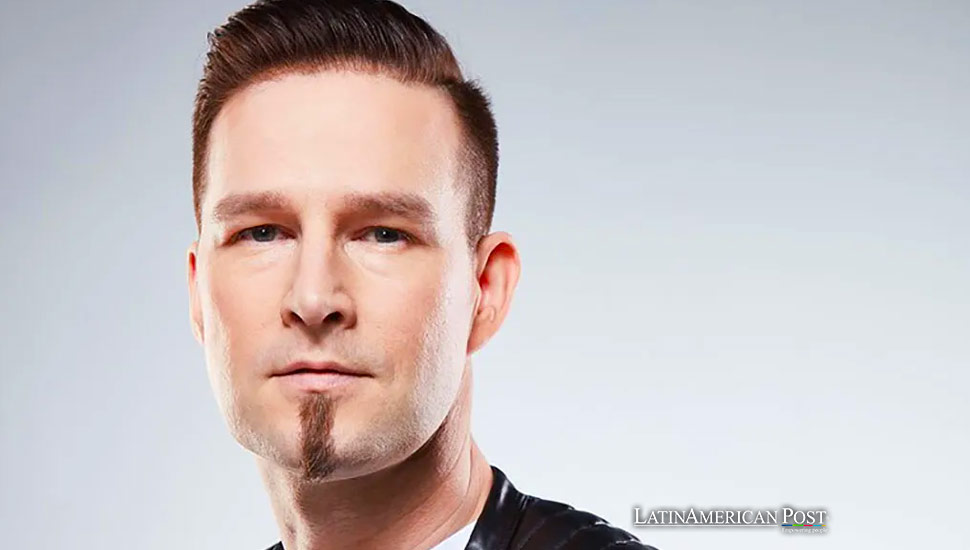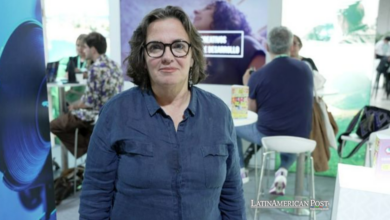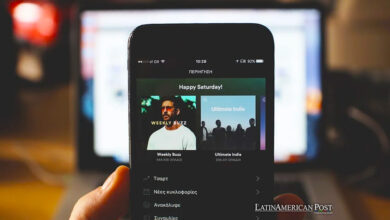Darude’s “Sandstorm” Outshines Colombian Shakira’s Song as Copa América Anthem

Darude’s electronic classic “Sandstorm” has emerged as the unofficial anthem of Copa América 2024 in the United States, surpassing Shakira’s official song in popularity and electrifying fans across stadiums.
Amid electrifying stadium atmospheres before every match, one song stands out, echoing through the stands and energizing fans as if they were on a dance floor. “Sandstorm,” the global electronic music classic by Finnish DJ Darude, has undeniably become the unofficial anthem of Copa América 2024 in the United States, surpassing Shakira’s official song.
The catchy “du du du du dú” of Darude’s track serves as the pulsating soundtrack to the 48th edition of the oldest national team tournament in the world. This Saturday, the game will determine its final semifinalists as Colombia faces Panama and Uruguay takes on Brazil. “Sandstorm” plays before the teams’ entrance protocols, capturing the crowd’s frenzy and showcasing the most animated fans on camera.
An Unofficial Anthem Emerges
Before the ball started rolling in American stadiums, it was assumed that the official anthem of Copa América was a version of Shakira’s “Puntería,” a track from her latest album, “Las mujeres ya no lloran.” However, it was later clarified that the Colombian star’s song was only for TelevisaUnivisión broadcasts.
Shakira has a well-established reputation for setting the tone for major sporting events. She did so with “Hips Don’t Lie – Bamboo” at the 2006 Germany World Cup and again in South Africa in 2010 with “Waka Waka.” Despite this legacy, Copa América 2024 has not presented an official song, unlike previous editions like 2019’s “Vibra Continente,” performed by Colombian star Karol G and Brazilian Léo Santana, or 2021’s version of “La Gozadera” by Gente de Zona.
The Rise of Sandstorm
In 2024, the void was filled informally by Darude, whose real name is Ville Virtanen. An eminent figure in electronic music, Darude has performed at festivals and events in over 70 countries, including the renowned Tomorrowland. He skyrocketed to fame in the 2000s with “Sandstorm,” a symbol of the millennial generation. Released in October 1999, the trance genre song is a synthesizer ode and an adrenaline explosion. The music video radiates early 21st-century style, complete with slicked-back hair and futuristic sunglasses.
Initially, “Sandstorm” went unnoticed, but its popularity surged with the rise of the internet and video game culture, allowing the song to gain multiple new lives and remain relevant. It became so well-known that it became a meme; whenever someone asked for a song name online, users would humorously respond with “Darude – Sandstorm.”
In a Billboard magazine interview marking the 20th anniversary of the track, Darude acknowledged its significance in his life. “I don’t want to be known just as the guy from ‘Sandstorm,’ but I’m not dumb or ignorant about how the world works. If you don’t like dance music but know my track, that’s fine,” he said. Undoubtedly, at Copa América in the United States, everyone dances to it.
Latin American Context and Cultural Impact
The phenomenon of “Sandstorm” at Copa América speaks volumes about the power of music in sports culture. Argentina, Brazil, and other Latin American countries have rich musical traditions that often intersect with sports. For instance, Argentine tango and Brazilian samba have historically influenced their soccer cultures. The unexpected rise of a Finnish electronic track as the unofficial anthem highlights the globalization of musical influences within the sport.
Moreover, the popularity of “Sandstorm” over Shakira’s song at this tournament reflects a broader trend in how fans engage with music. While official songs by global superstars like Shakira often aim to capture the spirit of events, grassroots preferences sometimes diverge, favoring tracks that resonate more directly with the collective energy and excitement of the moment.
Future of Tournament Anthems
The spontaneous adoption of “Sandstorm” raises questions about the future of tournament anthems. Traditionally, organizers commission and heavily promote official songs, aiming to encapsulate the essence of the event. However, the organic rise of a song like “Sandstorm” demonstrates that fans ultimately decide which tracks become synonymous with their experiences.
This trend suggests that future tournaments could benefit from embracing a more open-ended approach to selecting anthems, incorporating fan votes, or leveraging social media trends to identify tracks that genuinely resonate with the audience. Integrating fan preferences could lead to a more authentic and engaging musical experience that complements the excitement on the field.
As Copa América 2024 unfolds, Darude’s “Sandstorm” continues to dominate the soundscape, providing a high-energy soundtrack that surpasses Shakira’s official song. This phenomenon highlights the evolving nature of music in sports, where fan-driven choices increasingly shape the cultural atmosphere of significant events. The unexpected rise of a two-decade-old electronic track underscores the enduring power of music to unite and energize sports fans across the globe.
The success of “Sandstorm” at this year’s Copa América sets a precedent for future tournaments, suggesting that organizers might consider more flexible and inclusive approaches to selecting official anthems. As fans revel in the beats of Darude’s classic, the game showcases soccer excellence and the vibrant interplay between sports and music that continues to evolve in exciting new directions.




